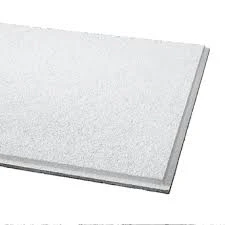- Afrikaans
- Albanian
- Amharic
- Arabic
- Armenian
- Azerbaijani
- Basque
- Belarusian
- Bengali
- Bosnian
- Bulgarian
- Catalan
- Cebuano
- Corsican
- Croatian
- Czech
- Danish
- Dutch
- English
- Esperanto
- Estonian
- French
- German
- Greek
- Hindi
- Indonesian
- irish
- Italian
- Japanese
- Korean
- Lao
- Malay
- Myanmar
- Norwegian
- Norwegian
- Polish
- Portuguese
- Romanian
- Russian
- Serbian
- Spanish
- Swedish
- Thai
- Turkish
- Ukrainian
- Uzbek
- Vietnamese
Dek . 02, 2024 07:58 Back to list
ceiling access panel requirements
Ceiling Access Panel Requirements Ensuring Safety and Efficiency
In commercial and residential construction, ceiling access panels play an essential role in providing access to vital systems located above ceilings, such as electrical wiring, plumbing, HVAC systems, and other infrastructure. These panels not only facilitate maintenance and repairs but also ensure that the aesthetic appeal of a space remains intact. Understanding the requirements for ceiling access panels is crucial for builders, architects, and property owners to maintain safety, efficiency, and compliance with building codes.
Definition and Purpose
Ceiling access panels are openings that allow personnel to enter and service hidden systems and equipment without dismantling the entire ceiling structure. They are vital in ensuring that regular maintenance can be conducted with minimal disruption. Often made from materials like metal, plastic, or gypsum board, these panels come in various sizes and designs to match different ceiling types.
Building Code Compliance
The first requirement for ceiling access panels is compliance with local and national building codes. The International Building Code (IBC) and the National Fire Protection Association (NFPA) establish specific guidelines regarding accessibility, safety, and fire resistance. For instance, access panels in fire-rated ceilings must meet certain fire-resistance ratings to prevent the passage of flames and smoke in case of a fire. It’s essential to consult these building codes to ensure proper installation and avoid potential legal issues.
Size and Location
Choosing the appropriate size and location for an access panel is paramount. The panel should be large enough to allow easy access for maintenance personnel and equipment but small enough to fit seamlessly into the ceiling structure. Common sizes range from 12”x12” to 24”x48”, depending on the application.
Location is equally crucial. Access panels should be installed in easily accessible areas without obstructing movement or creating safety hazards. They should be located near the equipment they are servicing, ensuring that maintenance can be carried out efficiently. Additionally, panels in locations with high traffic should be designed to withstand wear and tear.
Material Selection
ceiling access panel requirements

The materials used for ceiling access panels must align with the demands of the environment in which they are installed. For instance, panels in high-humidity areas, like bathrooms and kitchens, should be made from moisture-resistant materials to prevent deterioration. In contrast, panels in fire-rated ceilings must be constructed from materials that meet specific fire-resistance criteria.
Metal panels, such as those made from steel or aluminum, offer durability and often come with locking mechanisms for added security. Plastic panels may be sufficient for less critical applications and can provide a lightweight alternative.
Safety Features
Safety should always be a top priority in the design and installation of ceiling access panels. Edge finishes should be smooth to prevent injury, and panels should be designed to close securely to prevent accidental falls. Additionally, signage indicating the presence of access panels can help prevent accidents.
In commercial settings, it may be required to incorporate features that meet specific Occupational Safety and Health Administration (OSHA) regulations, ensuring that workers can safely access and maintain overhead systems.
Aesthetic Considerations
While functionality is key, the visual integration of access panels into the overall design of a space is also important. Access panels should be designed to blend seamlessly into the ceiling without drawing attention. Many modern access panels are designed to be painted or textured, allowing for a cohesive look that does not compromise the aesthetic appeal of the room.
Conclusion
In conclusion, ceiling access panels are a critical component in building design and maintenance, offering essential access to various systems while maintaining structural integrity and aesthetic value. Observing building code compliance, selecting appropriate sizes and materials, incorporating safety features, and considering aesthetic integration are all vital in ensuring that ceiling access panels meet the necessary requirements. By adhering to these guidelines, property owners and builders can create a safer, more efficient, and visually appealing environment.
-
Transform Interiors with PVC Gypsum Ceiling: A Stylish, Durable, and Moisture-Resistant SolutionNewsMay.19,2025
-
The Smart Interior Upgrade: Discover the Durability and Versatility of Gypsum Ceiling Access Panel SolutionsNewsMay.19,2025
-
The Smart Choice for Interior Design: Discover the Value of PVC Gypsum Ceiling SolutionsNewsMay.19,2025
-
Mineral Fiber Ceiling Tiles: The Smart Blend of Performance and AestheticsNewsMay.19,2025
-
Mineral Fiber Ceiling Tiles: The Superior Choice Over Gypsum for Sound and Fire SafetyNewsMay.19,2025
-
Mineral Fiber Ceiling Tiles: Eco-Friendly Strength and Style for Every CeilingNewsMay.19,2025







